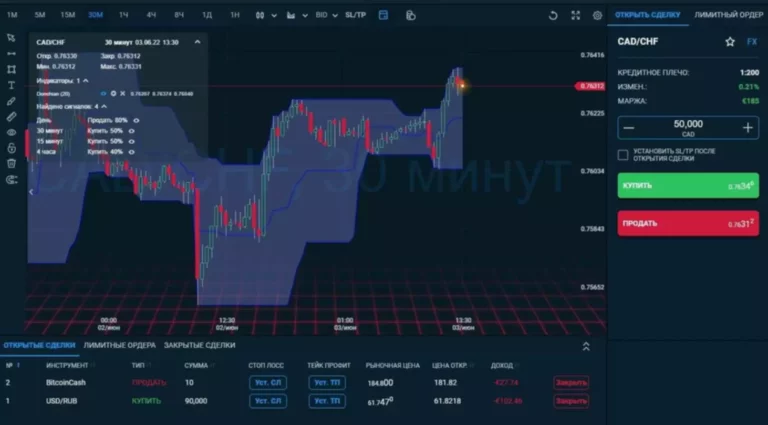E-commerce and digital data transactions create new challenges in assessing and managing your financial crime threat. With constant adjustments in expertise, will increase in monetary crimes and expanding rules, sustaining compliance can be an ongoing battle. As an example, recent developments have made achieving anti-money laundering (AML) compliance substantially tougher.
By identifying and assessing the dangers specific to their jurisdictions, international locations can develop focused strategies to fight money laundering and terrorist financing. This includes implementing strong customer due diligence processes, adopting risk-based approaches, and enhancing suspicious transaction monitoring and reporting techniques. FATF risk evaluation provides a structured framework for governments and financial establishments to judge the effectiveness of their current controls and make essential improvements.
Pursuing the target of detecting and stopping prohibited transactions and unhealthy actors usually comes at excessive operational value. The concept behind an appropriate risk-based strategy is that PSPs should focus more comprehensively on the small share of doubtless risky transactions and clients. To do that, establishments might need to develop more nuanced segmentation fashions, primarily based on real-time, up-to-date information to enable focused detection and a clear ranking of shoppers and transactions, from lowest to highest danger. Such a model would contemplate not solely historical transactional data and static customer records in KYC information but also forward-looking datapoints and exterior data on unhealthy actors.

Compliance should likewise be an integral a half of the processes for designing and approving products. In this space, PSPs and banks would possibly wish to work with these platforms and the customers the platforms serve, to help them struggle monetary crime in their own offerings. Such collaboration can contain increased data sharing amongst PSPs, banks, and shoppers, or it could merely imply higher shopper training about frequent risks and approaches to mitigate them. Financial-crime incidents and failings have been on the rise all through the pandemic, based on the Financial Action Task Force, a leading worldwide standards-setting physique for financial crime. Particularly within the client realm, the potential for fraud has also grown with the appearance of the COVID-19 pandemic.
Maximizing Effectiveness: Harnessing Cloud-based Options For Aml Compliance
One of the key worldwide organizations driving AML regulation is the Financial Action Task Force (FATF). Gen AI has the potential to allow the development of AI- and Gen AI-powered danger intelligence centers inside banks, serving all traces of protection. These centers can provide automated reporting, improved threat transparency, larger effectivity in risk-related determination making, and partial automation in drafting and updating policies and procedures to reflect altering regulatory requirements. Gen AI can improve coordination between the completely different strains of protection, strengthening the organization’s threat management framework (McKinsey).
- With constant modifications in know-how, will increase in financial crimes and expanding laws, sustaining compliance can be an ongoing battle.
- These measures are designed to detect and deter money laundering and the financing of terrorism.
- This step is vital as it helps in figuring out any risks that might come up from your business relationships.
- Middle management works in different departments and performs day by day enterprise and operational activities.
- Once the relevant data and information have been gathered, the subsequent step is to investigate the information to establish patterns and trends.
By implementing sturdy AML measures, international locations and monetary institutions can detect and report suspicious transactions, finally disrupting the circulate of illicit funds. Financial institutions face challenges related to a scarcity of information and technology resources, impeding the efficient detection and prevention of money laundering activities. Inadequate access to buyer, transaction, and third-party data, as properly as a scarcity of needed analytics instruments, hinder effective AML compliance. Small and medium-sized corporations, particularly, struggle with inadequate compliance officers, groups, and sources, necessitating the adoption of outsourcing options.
Technology-enabled solutions have revolutionized the greatest way AML danger assessments are carried out within the banking trade. These options support the automated or semi-automated collection of data, scoring of inherent danger, mapping of controls, and scoring of residual danger. By leveraging these solutions, organizations can obtain real-time danger insights and business intelligence that help improve revenue and establish new business alternatives https://www.xcritical.in/ for further development (Crowe). In conclusion, the consequences of non-compliance with AML laws in the banking sector are important and wide-ranging. Financial establishments that fail to conform not only face financial and reputational risks but also penalties and legal penalties. It is essential for banks to prioritize AML compliance and implement stringent measures to prevent money laundering and shield the integrity of their operations.
Perceived weaknesses within the controls applied by electronic-payments platforms will consequently draw consideration from regulators. Banks, moreover, are more and more expecting the PSPs that form part of their community to have sturdy anti–money laundering (AML) and fraud controls in place. Rather than wait for model new regulation, PSPs can move proactively, incorporating classes from banks’ experience while utilizing their own advanced technological abilities. This dialogue lays out the important thing rules for designing a strategy that PSPs can use to their benefit in countering the risk of financial crime while preserving and enhancing the PSP buyer expertise. By understanding these vulnerabilities, authorities can implement focused measures to strengthen the financial system’s resilience towards cash laundering and terrorist financing.
Who Commits Monetary Crimes?
For instance, certain international locations or jurisdictions have excessive levels of corruption or unstable governments. Some are generally identified as financial institution secrecy and ML havens or suffer from excessive ranges of drug production and transport, and cartel actions. Information sources to help identify reputational danger embody Transparency International’s Corruption Perceptions Index and the united states
Senior Management is the very best degree of administration inside a company, comprised of departmental heads and is required to establish and assess general and departmental-level risks periodically. All departmental-level key risks and risk-assessment results are reported to the CEO by the management AML Risk Assessment group for his or her evaluation and acceptable feedback. Leading firms, for instance, are adopting a live, always-on mannequin to evaluate the risk of consumers all through their life cycle.

By systematically assessing these areas, you presumably can create a sturdy technique for monetary crime prevention. The betrayal of belief by misappropriating funds, usually seen in monetary roles like accountancy. A trendy plague utilizing know-how to steal or compromise data, funds, or identities, starting from small-scale thefts to large bank heists. The process of constructing “soiled” money seem “clean” by funneling it by way of respectable companies and transactions. Encompassing an array of nefarious actions, from money laundering to tax fraud and cybercrimes, FCRM has turn into an important technique in our digital age, where cyber threats usually are not simply shadowy figures in the background but palpable, urgent realities. Similarly, every departmental head, being a part of the senior administration, owns the accountability for the assessment of respective departmental dangers.
Staying Forward Of The Sport: Nailing Cdd Rules In Aml Compliance
This includes overseeing monetary systems, implementing efficient controls, and guaranteeing the integrity of monetary information. A monetary crime danger evaluation is a detailed process to identify, analyze, and consider the firm’s exposures to money laundering, terrorist financing, fraud, and different criminal activity. Analyzing the info entails looking for anomalies, uncommon patterns of transactions, high-risk customer profiles, and other indicators of potential money laundering or terrorist financing activities. It is important to assume about each quantitative and qualitative elements during the evaluation course of. This contains analyzing transaction volumes, frequencies, geographical places, and other contextual info.
Conducting a comprehensive risk evaluation is a key side of an efficient compliance program. FTI Consulting works with conventional and non-traditional financial establishments to develop threat assessments that shape robust Anti-Financial Crime Compliance Programs capable of withstanding regulatory scrutiny.
The identification course of often includes an intensive evaluation of transactional data, customer profiles, and suspicious exercise reports. By examining patterns and anomalies, authorities can uncover potential risks and take appropriate actions to mitigate them. For extra information on money laundering, you can refer to our article on FATF money laundering. Middle administration works in several departments and performs every day business and operational actions.
What Are The Types Of Financial Crime?
The danger filtering section, which is built on the danger modeling section, focuses on figuring out essentially the most relevant compliance risk elements dealing with the institution, in respect to monetary crime. This part is important because it helps to zone in and focus on these risks, which are of most concern to an organization. This is not a comprehensive listing, and must be complemented by continuous analysis and reference to emerging dangers and crime tendencies. They determine the allocation of resources for FCRM initiatives, ensuring that enough tools, know-how, and personnel can be found to mitigate monetary crime risks. They must ensure the group complies with related monetary crime laws and regulations. This involves staying updated on regulatory changes and guaranteeing the group’s policies and practices are in line with these laws.
These options can streamline the chance evaluation process, automate knowledge assortment, and supply real-time danger insights and business intelligence. By leveraging expertise, banks can make informed selections, improve risk management strategies, and guarantee their AML applications remain robust and efficient. For more info on AML compliance in banking, you can go to our article on aml compliance in banking.
Step 2: Conduct A Supplier Monetary Risk Assessment
The strategies might embody implementing new insurance policies, procedures, and controls to strengthen Anti-Money Laundering (AML) and Counter Financing of Terrorism (CFT) measures. Anti-Money Laundering measures are important for maintaining the integrity and stability of the financial system. Money laundering includes the method of reworking illicitly obtained funds into legitimate property, making it troublesome to trace the origins of the funds.
To perform an efficient risk assessment, a collection of steps are to be performed by the danger management team or risk owners. Risk evaluation includes performing an inherent and residual danger assessment of identified dangers where impact and chance assessments are carried out to establish key and vital dangers. Effective collaboration and information sharing between financial establishments and regulatory authorities are very important for successful AML danger assessment. However, issues about authorized legal responsibility, reputational risks, and inadequate assets or experience for effective analysis of shared data hinder cooperation.
